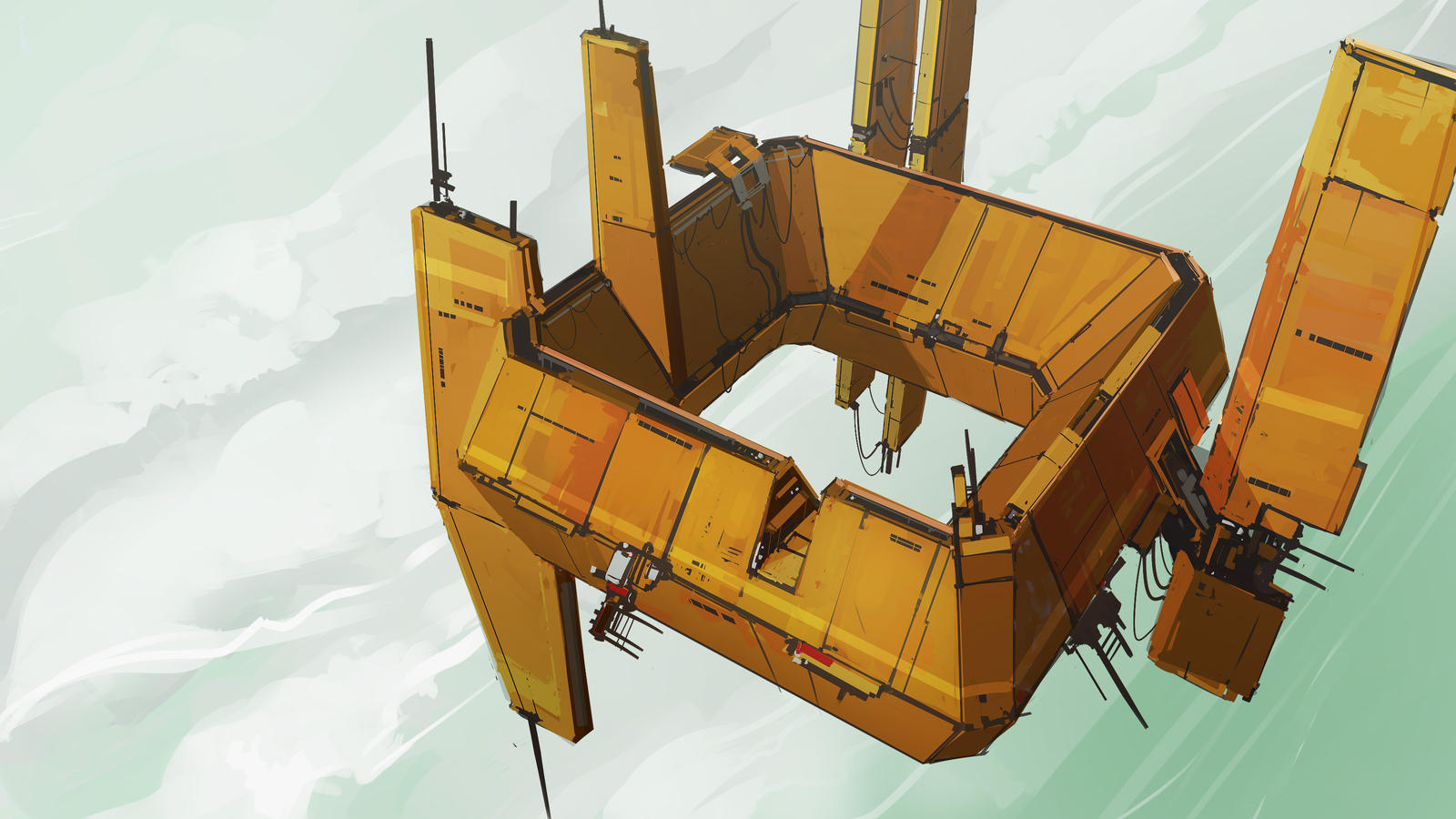AMCO
I'm Sorry Dave

OUT OF CHARACTER INFORMATION
The ADP is a ruggedly simplistic design purpose-built to be cheaply and quickly constructed on-site using locally-available resources. The stations do not even rely on regular tibanna deliveries, instead exclusively employing kinetic weapons by default; while railguns are quite rare, the simplistic design used by ADPs is cheaper than turbolasers as it only uses relatively abundant chemical elements. This is not without its drawbacks.
For one, the rails must be switched quite frequently; the estimated downtime is one minute every ten minutes per gun in a fight. They are also rather power-inefficient - to meet their energy needs, ADPs are equipped with two large fission reactors that run at minimum output out of combat.
Naturally, heavy fighting produces a great deal of radioactive waste. Fortunately, this can be safely dumped onto nearby uninhabitable worlds.
While fission reactors are cheap and uranium abundant, they have a tendency to explode if power is lost for extended periods of time.
- Intent: Discount defence platforms for the open market.
- Image Source: Flying Fortress by cyberkolbasa
- Canon Link: N/A
- Permissions: N/A
- Primary Source: Paragon-class Defence Platform
- Manufacturer: The Globex Corporation
- Affiliation: Globex Security Divison
- Market Status: Open-Market
- Model: OD-7b Automated Defence Platform
- Production: Mass-Produced
- Material: Locally-abundant materials; if subpar, more armour plating is added to compensate.
- Classification: Orbital Defence Platform
- Length: 370-390 metres
- Width: 370-390 metres
- Height: 110-140 metres
- Armament: Average
- Railguns
- Flak Guns
- Concussion Missiles (Typically Dumb-Fire)
- Defences: Average
- Hangar Space: Extreme | 5
- Hangar Allocations: ADPs can house up to five squadrons of starfighters and/or support craft, but are usually understrength.
- Manoeuvrability Rating: None
- Speed Rating: None
- Hyperdrive: N/A
- ADPs are equipped with most features and facilities expected of stations of comparable size and purpose.
- The core design of an ADP is a big square with a hole in the middle. Other facilities can be attached, see the art.
- Examples include landing pads, administrative facilities, communications facilities, fuel silos, storage, etc.
- ADPs are built with a degree of idiot-proof redundancy that both protects them from shoddy maintenance (For a time, anyway. Cheapskates be warned - the warranty does not cover malfunctions due to misuse.) and 'keep them operating even with a few holes'.
- ADPs are usually operated by droids but may be staffed by organics if local manpower is cheap.
- Budgetary Restraint: ADPs can be cheaply manufactured anywhere (exceptions may apply) solely using local materials. They are the very definition of expendable, allowing them to be fielded in quantities not normally permissible for defence platforms of their size.
- Theoretical Fighters: ADPs can conceivably field five squadrons of starfighters! This is expensive, so most hold one or two.
- Dumb Engineering: ADPs are designed to be cheap and idiot-proof, not above average. You get what you pay for.
The ADP is a ruggedly simplistic design purpose-built to be cheaply and quickly constructed on-site using locally-available resources. The stations do not even rely on regular tibanna deliveries, instead exclusively employing kinetic weapons by default; while railguns are quite rare, the simplistic design used by ADPs is cheaper than turbolasers as it only uses relatively abundant chemical elements. This is not without its drawbacks.
For one, the rails must be switched quite frequently; the estimated downtime is one minute every ten minutes per gun in a fight. They are also rather power-inefficient - to meet their energy needs, ADPs are equipped with two large fission reactors that run at minimum output out of combat.
Naturally, heavy fighting produces a great deal of radioactive waste. Fortunately, this can be safely dumped onto nearby uninhabitable worlds.
While fission reactors are cheap and uranium abundant, they have a tendency to explode if power is lost for extended periods of time.
Last edited:





